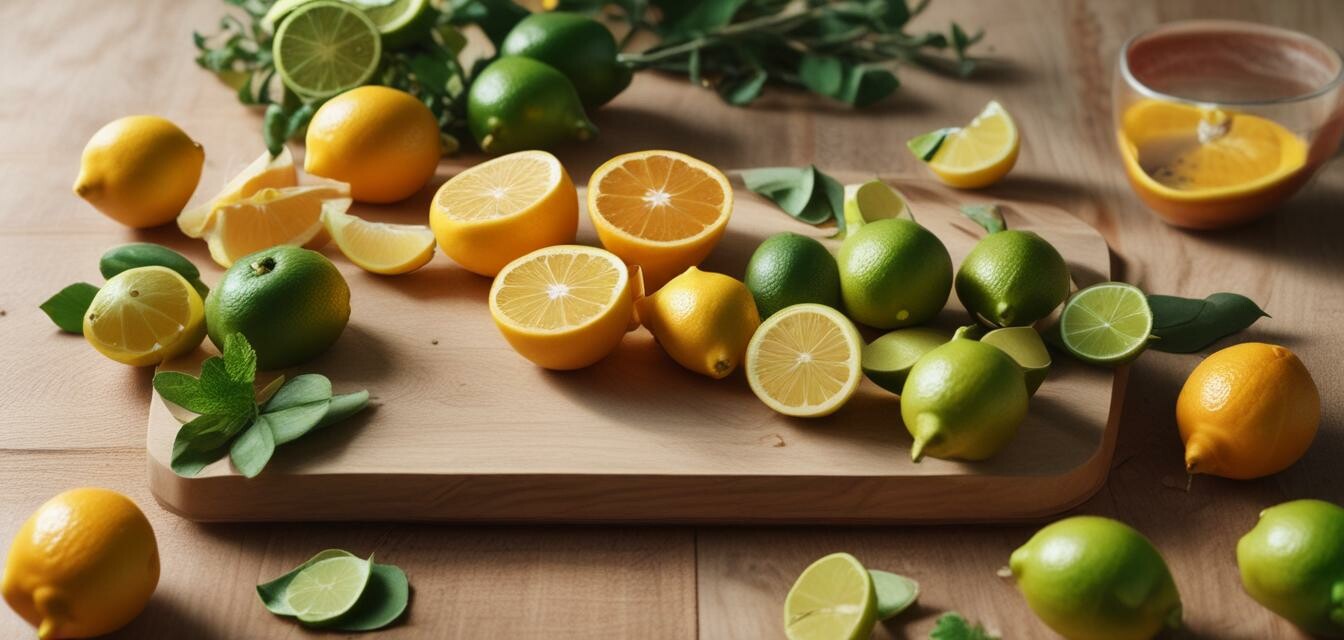
The art of cooking with citrus
Key takeaways
- Citrus fruits add flavor and brightness to both sweet and savory dishes.
- Utilize zest and juice for maximum flavor enhancement.
- Know the best cooking techniques to bring out the citrus flavors.
- Pair citrus with various ingredients for balanced recipes.
- Experiment with different citrus varieties to find your favorites.
Do you want to enhance your culinary creations? Incorporating citrus into your cooking can elevate flavors and add a refreshing twist to classic recipes. In this guide, we'll explore the art of cooking with citrus, providing tips, techniques, and inspiration to make your dishes more vibrant and appealing.
Understanding citrus fruits
Citrus fruits come in various varieties, each offering unique flavors and uses. Here are some popular ones:
| Citrus Fruit | Flavor Profile | Common Uses |
|---|---|---|
| Lemon | Bright, tart | Desserts, marinades, dressings |
| Orange | Sweet, juicy | Salads, desserts, drinks |
| Lime | Tart, slightly bitter | Mexican and Thai dishes, drinks |
| Grapefruit | Bitter, tangy | Salads, breakfast dishes |
| Tangerine | Sweet, mild | Snacking, salads, desserts |
Cooking tips for incorporating citrus
Using citrus in your cooking can feel intuitive, but there are techniques to maximize the impact they have on your dishes:
- Zest it! - Grating the outer peel of citrus fruits is an excellent way to infuse flavor without adding acidity. Use a microplane or zester to achieve fine zest.
- Juice it! - Freshly squeezed citrus juice brings brightness to your meals. Add it to dressings, marinades, and glazes for a refreshing kick.
- Pair with your ingredients - Citrus pairs well with a wide array of flavors, especially herbs, spices, and rich ingredients like butter and cream. For instance, consider adding lemon zest to pasta dishes or a squeeze of lime over tacos.
- Macerate fruits - Soak chopped citrus fruits in sugar or honey to create a delightful syrup. This is perfect for enhancing yogurt or dessert dishes.
- Char citrus - Grilling or broiling citrus fruits can mellow their acidity, providing a sweeter flavor that's wonderful in salads or alongside grilled meats.
Brightening up recipes
Integrating citrus can transform a dish from ordinary to extraordinary. Here's how to enhance some classic recipes:
| Recipe | Citrus Addition | Effect |
|---|---|---|
| Chicken salad | Orange segments and lime vinaigrette | Adds sweetness and acidity |
| Sorbet | Lemon juice and zest | Enhances brightness and flavor intensity |
| Grilled fish | Lime juice marinade | Tenderizes and adds fresh flavor |
| Chocolate cake | Orange zest and juice in the batter | Compliments chocolate richness |
Making the most of citrus in different cuisines
Citrus has its place in many culinary traditions. Let's explore a few:
- Mexican cuisine: Limes are essential to guacamole and margaritas, adding necessary acidity.
- Italian cuisine: Lemons are frequently used in pasta sauces and desserts, giving a bright finish.
- Thai cuisine: Kaffir lime leaves add a unique zest to curries and soups, enhancing flavor profiles.
- Middle Eastern cuisine: Pomegranate molasses and oranges can be used to enrich tabbouleh or grilled meats.
Safety and storage tips
Properly using and storing citrus will ensure that you get the best flavor and freshness:
- Store whole citrus fruits in the fridge to keep them fresh longer.
- Juiced citrus can be stored in airtight containers in the refrigerator for a few days.
- Zest can be frozen for up to six months for later use in cooking.
Beginner tips for cooking with citrus
- Start simple: Add lemon or lime juice to your water for a refreshing drink.
- Try zesting: Use lemon zest in pancakes for an easy citrus flavor addition.
- Experiment: Don’t be afraid to mix different citrus juices in dressings and marinades.
Pros
- Adds bright flavors to dishes.
- Enhances both sweet and savory recipes.
- Improves presentation with vibrant colors.
Cons
- Excess acidity can be overpowering.
- Requires careful pairing with ingredients.
Conclusion
Cooking with citrus can take your culinary skills to a new level by introducing vibrant flavors and refreshing twists to your dishes. Whether you're a beginner or an experienced cook, experimenting with citrus offers endless possibilities. By understanding different types of citrus, mastering essential cooking techniques, and enhancing your favorite recipes, you'll find that the inclusion of citrus can truly transform your cooking experience.
For more tips on cooking and improving your culinary techniques, visit our Cooking Tips & Techniques category where we provide practical advice for every home chef!
Ready to elevate your cooking? Explore our different product categories such as Baking Essentials and Kitchen Appliances to find the perfect tools for your culinary adventures.